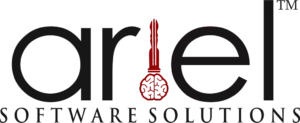
What is OCR (Optical Character Recognition)?
Optical Character Recognition (OCR) is a transformative technology that converts images of text into machine-readable digital formats. This process bridges the gap between physical documents and digital data by turning scanned documents and pictures of text into editable and searchable formats.
OCR translates text from images into digital text. For instance, when you scan a receipt or a form, it’s initially saved as an image file. Although this image cannot be easily edited or searched, OCR processes it to create a text document, allowing you to manipulate and utilize the content digitally.
Why is OCR important?
In many business operations, handling printed documents—such as forms, invoices, and contracts—is routine. Managing these paper documents is time-consuming and space-consuming. Scanning them into images is just the first step; the real challenge lies in converting these images into usable text. OCR solves this problem by transforming text images into searchable, editable data, making it easier to analyze, automate, and streamline various business processes.
How Does OCR Work?
OCR technology works through several key steps:
Image Acquisition
The process begins with capturing the document through scanning or photographing. This converts the physical text into a digital image, which is then transformed into binary data (a series of 1s and 0s) for further processing. The OCR software identifies and separates text from the background to prepare for analysis.
Preprocessing
In this step, the digital image is prepared for text recognition. The image is cleaned by correcting any skew (misalignment), removing speckles and noise that may interfere with recognition, and adjusting contrast to make the text clearer and more distinct from the background.
Text Recognition
OCR algorithms then analyze the preprocessed image to identify characters. This involves:
- Pattern Matching: Comparing the text in the image with stored patterns or templates of characters, which works well for standard fonts.
- Feature Extraction: Analyzing unique features of characters, such as lines and loops, to recognize a broader range of fonts and handwriting styles.
Postprocessing
The final step involves converting the recognized text into a usable digital format, such as plain text, Word, or PDF. Some systems also generate annotated PDFs that display both the original image and the extracted text, allowing for easier verification and correction if necessary.
Types of OCR Technology
OCR technologies vary based on their applications:
Simple Optical Character Recognition Software
Basic OCR software uses pre-stored templates of fonts and text patterns to match and recognize text images. It compares each character in the image to these templates. This approach is limited because it can’t handle the wide variety of fonts and handwriting styles.
Intelligent Character Recognition Software
Modern OCR systems use Intelligent Character Recognition (ICR) to read text more like humans. They use machine learning and neural networks to analyze text by examining various attributes like curves and lines, enabling them to recognize diverse fonts and handwriting styles quickly.
Intelligent Word Recognition
Intelligent Word Recognition (IWR) processes entire words instead of individual characters. This method enhances recognition efficiency by analyzing complete word images directly.
Optical Mark Recognition
Optical Mark Recognition (OMR) detects and processes marks, symbols, and logos in documents, such as checkboxes or watermarks.
Benefits of OCR
OCR provides several advantages:
- Searchable Text: Converts documents into searchable digital archives, making it easier to retrieve information and conduct data analysis.
- Operational Efficiency: Automates tasks like data entry and document processing, saving time and reducing manual work. For example, it can scan forms for automated verification or convert handwritten notes into editable text.
- Integration with AI: Often used alongside AI for various applications, such as reading license plates in self-driving cars or detecting logos in social media.
OCR in Action
OCR technology is used across various industries:
Healthcare
OCR is instrumental in transforming handwritten or printed patient records into digital formats. This digitization facilitates easier access to patient information, improves accuracy in medical billing, and enhances overall healthcare data management by making records searchable and manageable.
Finance and Banking
In this sector, OCR automates the extraction of data from checks and financial documents. By converting printed text into digital data, it speeds up check processing, reduces manual data entry errors, and streamlines the management of financial records and statements.
Legal
OCR technology helps legal professionals by converting physical case files, legal briefs, and contracts into digital text. This not only makes it easier to search and retrieve important documents but also assists in extracting key details from contracts and legal texts, improving document organization and analysis.
Retail
Retailers use OCR to read and process barcodes, product labels, and receipts. This automation helps in maintaining accurate inventory records, managing stock levels, and streamlining the check-out process. It also simplifies the tracking of sales and expenses.
Education
OCR technology is used to digitize textbooks, research papers, and student records. This conversion makes educational materials more accessible and searchable, supports digital learning platforms, and helps in managing academic records more efficiently.
Government
OCR aids government agencies by converting historical records, administrative documents, and public records into digital formats. This digitization improves the accessibility of public records, enhances archival processes, and supports better record-keeping and retrieval.
Transportation and Logistics
In this field, OCR is employed to process shipping labels, invoices, and customs documentation. This helps in automating data entry, improving the accuracy of shipment tracking, and ensuring compliance with regulatory requirements.
Publishing and Media
OCR technology is used to digitize printed newspapers, magazines, and books, making them available online and searchable. It also facilitates content extraction and aggregation, aiding in digital archiving and improving access to historical media.
Optical Character Recognition is a powerful tool that revolutionizes how we handle and process text. From improving operational efficiency to integrating with AI applications, OCR offers significant benefits for businesses across various sectors. At Ariel Software Solutions Pvt. Ltd., we leverage these capabilities to provide customized OCR solutions that fit your needs.




